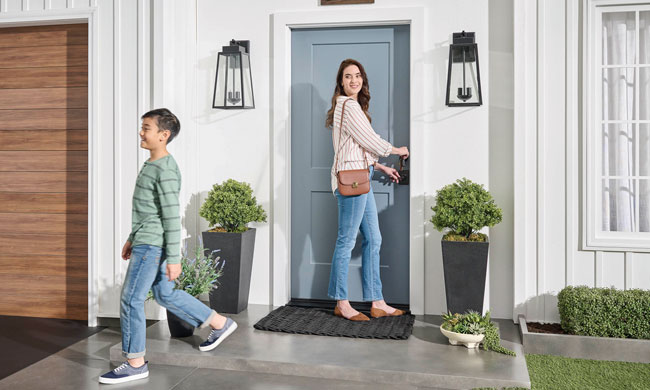Live Better
Explaining atrial fibrillation

In late 2013, the World Health Organization released results from a data analysis that examined atrial fibrillation and its prevalence across the globe. The results were troubling, indicating that 33.5 million people worldwide have the condition.
If those figures don’t raise an eyebrow, that’s likely because few people are familiar with atrial fibrillation, in spite of its prevalence. A broader understanding of atrial fibrillation, often referred to as AF, may help people reduce their likelihood of developing the condition.
What is atrial fibrillation?
The National Heart, Lung and Blood Institute notes that atrial fibrillation is the most common type of arrhythmia, which is a problem with the rate or rhythm of the heartbeat. AF occurs when rapid, disorganized electrical signals cause the heart’s two upper chambers, known as the atria, to contract very quickly and irregularly.
What happens when a person has atrial fibrillation?
The heart is not functioning properly when a person has atrial fibrillation. That’s because blood pools in the atria when a person has AF, and because of that pooling, the blood is not pumped completely into the heart’s two lower chambers, which are known as the ventricles. As a result, the heart’s upper and lower chambers do not work in conjunction as they do when the heart is fully healthy.
Are there symptoms of atrial fibrillation?
Some people with AF do not feel symptoms and only learn of their condition after physical examinations. That highlights the importance of scheduling annual physicals for all people, but especially for people with a personal or family history of heart trouble.
According to the American Heart Association, the most common symptom of AF is a quivering or fluttering heartbeat, which is caused by abnormal firing of electrical impulses. Anyone who feels such a symptom or suspects their heartbeat is abnormal should consult a physician
immediately.
In addition to a quivering or fluttering heartbeat, the AHA notes that people with AF may experience one or more of the following symptoms:
· General fatigue
· Dizziness
· Shortness of breath and anxiety
· Weakness
· Faintness or confusion
· Fatigue when exercising
· Sweating
· Chest pain or pressure
The AHA warns that people experiencing chest pain or pressure are having a medical emergency that requires immediate medical attention. Whether or not symptoms of AF are detected, the condition can still increase a person’s risk for serious medical problems, including stroke.
Who is at risk for atrial fibrillation?
No one is immune to atrial fibrillation, though risk of developing the condition rises as a person ages. Men are more likely than women to develop AF, which the NHLBI notes is more common among whites than African Americans or Hispanic Americans.
People suffering from hyperthyroidism, a condition characterized by excessive amounts of the thyroid hormone, are at greater risk for AF than those without the condition. In addition, people who are obese and those who have been diagnosed with diabetes or lung disease are at greater risk for AF than those without such
conditions.
The NHLBI also notes that AF is more common in people who have:
- High blood pressure
- Coronary heart disease
- Heart failure
- Rheumatic heart disease
- Structural heart defects
- Pericarditis
- Congenital heart defects
Can atrial fibrillation be prevented?
There is no guaranteed way to prevent AF, though certain lifestyle choices can reduce a person’s risk for the condition. A heart-healthy diet that’s low in cholesterol, saturated fat and trans fat and also includes daily servings of various whole grains, fruits and vegetables can lower a person’s risk for AF. Daily physical activity, maintaining a healthy weight and not smoking also can lower a person’s risk.
Atrial fibrillation is a rising threat across the globe. More information about AF can be found at www.heart.org.
Live Better
5 home updates to provide peace of mind for your family

(Family Features) Home improvement projects often focus on updating the aesthetic of your house, but upgrades that make your living space more secure and comfortable for you and your family are sometimes even more important.
From your front door to the interior of your home and more, these ideas from the experts at Masonite, a global industry leader in interior and exterior doors, can help provide greater peace of mind – ensuring what matters most is always protected.
Ensure Your Home is Well-Lit
A well-lit home exterior makes it easier to spot potential threats and may even deter people and animals that don’t belong on your property. Automatic outdoor lighting, either set to a timer or triggered by motion or light sensors, can help you see what’s going on outside. Ensure fixtures on your porch, patio and garage are in good working order and replace burned out bulbs or lights that no longer function. Adding landscape lighting can also aid in security while boosting curb appeal.
 Protect Your Home with a Secure Front Door
Protect Your Home with a Secure Front Door
Upgrading your front door can do much more than just improve the look of your home – it’s also an important part of providing enhanced security for you and your family. With four times more impact resistance than a standard deadbolt lock, the M-Protect Multi-Point Security Lock offers homeowners unmatched protection to keep what matters most safe. The lock works like a standard deadbolt, but with more points of contact, and it is compatible with a wide array of handle sets and hardware, including electronic deadbolts. It can be added to any Masonite Performance Door System – an innovative solution that provides superior energy efficiency, performance and comfort – which is available in a diverse range of finishes, colors and glass styles to fit any home design.
Reduce Fire Hazards
Many elements of a home like furnaces, chimneys, hot water heaters and other gas appliances provide value to homeowners through comfort and convenience but can pose risks without proper maintenance. Hiring a professional to check your heating and air conditioning system annually can help you avoid costly repairs while also protecting your loved ones. Keeping the chimney clean of debris, creosote and soot helps lower fire risk and ensures smoke, carbon dioxide and other gases are safely carried out of the home.
Control Home Systems On the Go
Installing security systems, doorbells, lighting and other systems that can be controlled from a smartphone app, like the Masonite M-Pwr Smart Door, can provide added convenience and peace of mind. You can remotely turn lights on and off, unlock doors, change the temperature, open or close garage doors and check camera feeds while away.
Replace Smoke and Carbon Monoxide Detectors
A simple project to make your home safer, it’s essential to check your smoke detectors regularly and replace the batteries every six months. If you discover the date of manufacture on the back of your smoke detectors is more than 10 years ago, replacement is recommended by the National Fire Protection Association. While checking your smoke detectors, test or install carbon monoxide alarms to ensure you have a way to detect the invisible, odorless gas that can cause serious health problems if left unchecked.
Visit Masonite.com/mprotect to learn more about the latest innovations in home security.
SOURCE:
Masonite
Live Better
Throw a party like a pro

(Family Features) Whether you’re celebrating a special occasion or simply catching up with loved ones, playing host can be as demanding as it is enjoyable. Before gathering your crew for your next event, make a plan to ensure you get to enjoy the day as fully as your guests.
Keep the Menu Simple
An ornate spread may be impressive, but your guests are just as likely to appreciate a less demanding menu with a few standout dishes. Offer a single main dish, a couple of tried-and-true sides, some finger foods for snacking and a seasonal dessert. Beverage staples like tea, lemonade and water are all you really need, but if that feels too basic, you can offer a flavor station with fresh fruit like berries and lemon wedges, flavored syrups and other sweeteners. If you’ll be serving alcohol, don’t try to cater to everyone’s favorite. Select neutral white and red wines and one or two beer varieties. A signature cocktail you can premix and serve is another way to add a special touch.
Set a Thoughtful Theme
One area many hosts go overboard is theming their events. While setting a theme can be a fun idea, it doesn’t have to be fussy or complicated, and your decorations don’t have to be over the top. Subtle color, centerpieces and serving pieces are all places you can inject some thematic vibes without investing too much time or money. You can also let your theme influence any games or activities you plan, as well as other entertainment like background music.
Anticipate Guests’ Needs
Thinking ahead about your guests’ comfort can prevent scrambling once the party is underway. Consider needs like seating, where you’ll keep extra food for quick refills and essentials like more toilet paper in the guest bath. Also anticipate accidents like spills and have supplies ready to efficiently correct inevitable incidents. Remember to plan for extra trash bins and if guests will be congregating outdoors, provide extra sunscreen, bug spray and fans.
Organize Entertainment
Depending on the purpose of the party, your entertainment may be pretty clear, but if it’s a casual gathering, you’ll likely want to provide guests some ideas for passing the time. Board games and backyard games are almost always a hit. A playlist that fits your theme can add ambiance and provide background for conversation, but you can also inject some musical fun with karaoke. If you’ll have kids in attendance, provide age-appropriate options for shorter attention spans, too.
Make Cleanup Easy
After the last guest leaves, you may be ready to call it a night, but taking care of a few quick chores can make cleanup easier in the morning. Load the dishwasher and set it to run overnight, leaving any tough dishes to soak in hot, soapy water. Check for any spills or stains that need immediate attention and get a jump start on the floors. For a convenient hands-off experience, try the Eufy S1 Pro Robot Vacuum and Mop, which achieves a 99.99% sterilization rate when mopping and, using automated sensors, elevates the mophead and converts to powerful suction for carpeted areas. After cleaning, the robot docks to automatically empty its dustbin, dispose of wastewater and clean its mopping pads, drying them with hot air to inhibit bacterial growth and odors.
Explore more ideas to tackle entertaining (and its aftermath) with ease at eufy.com.
Photo courtesy of Shutterstock (group of friends)
SOURCE:
Anker Innovations
Live Better
Explore your dream destination:Tips for a a travel adventure

(Family Features) If you find yourself dreaming of sunshine, sand and sparkling pools, it may be time to start looking forward to your next vacation getaway. Get a jumpstart on building excitement for the journey ahead by beginning preparations early, which offers many benefits, including better rates and more time to research your options.
Start exploring ideas for a fun-filled trip with these tips from the travel experts at Funjet, which specializes in providing travelers with vacation packages to hundreds of destinations around the world:
Plan Ahead Booking your vacation well in advance allows you to take advantage of the best deals at
Booking your vacation well in advance allows you to take advantage of the best deals at
the most popular hotels and hottest travel dates. In addition, by being flexible with travel dates,
families can save hundreds of dollars. Moving travel dates by a day or two can result in major savings, often even more than the discounts you can get on last-minute trips.
Research Dream Destinations
Deciding where you want to go is the first step, but with a literal world of possibilities, it can be difficult to narrow down your choices. One place you can find inspiration is by exploring the top travel destinations others are choosing. For example, the top 10 travel destinations booked with Funjet in 2023 include numerous international destinations. Las Vegas is the only U.S. city to make the top 10 list. Mexico is especially popular, with Cancun, Cozumel, Puerto Vallarta and San Jose Del Cabo. Others include Belize City, Belize; Liberia, Costa Rica; Montego Bay, Jamaica; Panama City, Panama; and Punta Cana, Dominican Republic.
Consider All-Inclusive Options
Whether you prefer adults-only or family-friendly, luxury or budget-friendly, there’s a diverse range of all-inclusive resorts to choose from. All-inclusives are known for their convenience and value. They offer hassle-free experiences with meals, drinks and often activities included. While many resorts in Mexico and the Caribbean islands are all-inclusive, be aware that smaller islands like Antigua may feature European plan-style hotels, where meals and drinks are not included.
An all-inclusive package usually encompasses a variety of activities and amenities curated to offer an enjoyable and cost-effective vacation. Within these packages, guests often have the opportunity to access amenities such as swimming pools, engage in sports activities, participate in fitness classes and other entertaining experiences.
Pack Like a Pro
Gathering everything you need for a vacation, especially with kids in tow, can be stressful. To make the process easier, organize your packing based on factors like the length of your trip, airline policies and your family’s activities. Essentials like an umbrella should not be overlooked, especially if your destination’s weather can be unpredictable. Maximize luggage space by packing travel-sized toiletries and put electronic necessities like your mobile device, charger and headphones in your carry-on bag.
Anticipate Extra Expenses
While all-inclusive resorts make tropical getaways stress-free and economical, it’s customary to express appreciation for exceptional service with tips. Resorts typically don’t require tipping, but guests commonly tip as a gesture of gratitude. When deciding to tip, families should consider modest amounts, like $1-5 per meal per person, and be mindful of different service levels as well as the convenience of using local currency. Having cash on hand makes it easier to tip as needed and ensure you have extra for souvenirs and other purchases.
Unplug and Unwind Although most travelers believe it’s essential to stay connected, it’s a good idea to limit screen time so you can make the most of your vacation. Schedule a specific time, preferably in the morning, to address emails and online tasks then enjoy a worry-free rest of the day. While phones are often used to capture photos and videos or look up information about nearby attractions, putting away the screens means you’ll be able to enjoy the scenery, connect with loved ones and have a truly rejuvenating experience.
Although most travelers believe it’s essential to stay connected, it’s a good idea to limit screen time so you can make the most of your vacation. Schedule a specific time, preferably in the morning, to address emails and online tasks then enjoy a worry-free rest of the day. While phones are often used to capture photos and videos or look up information about nearby attractions, putting away the screens means you’ll be able to enjoy the scenery, connect with loved ones and have a truly rejuvenating experience.
Protect Your Group Travel
When traveling with a group, there’s a greater chance of something happening that changes plans between when you book your trip and leave. That’s why it can be a good idea to take a “travel with confidence” approach and consider including a travel protection plan in your reservations. This insurance allows travelers to cancel their trip for any reason, if necessary. When traveling with a group, stick with nonstop flights when possible, as you’re more likely to stay together, which can mean more cost-effective travel.
Enjoy the Experiences
While spending leisure time by the resort pool with afternoon cocktails can be a relaxing reward, you can make the most of a destination vacation by also planning a tour. Many destinations offer services that can assist travelers with booking various adventures, ranging from catamaran cruises to hikes and almost everything in between.
Find more tips and plan your next adventure at Funjet.com or call your local travel advisor.
Where to Stay
Start planning your dream getaway by checking out these traveler-favorite destination properties, based on bookings through Funjet:
Top 10 All-Inclusive Resorts
- Dreams Onyx Resort & Spa (Punta Cana, Dominican Republic)
- Dreams Bahia Mita Surf & Spa Resort (Nayarit, Mexico)
- Riu Caribe (Cancun, Mexico)
- Riu Guanacaste (Costa Rica)
- Riu Negril (Jamaica)
- Iberostar Grand Paraiso (Riviera Maya, Mexico)
- Riu Cancun (Mexico)
- Royalton Riviera Cancun, An Autograph Collection (Mexico)
- Secrets Maroma Beach Riviera Cancun (Quintana Roo, Mexico)
- Secrets Huatulco Resort & Spa (Oaxaca, Mexico)
Highly Rated Hotels for Groups
- Royalton Riviera Cancun, An Autograph Collection (Mexico)
- Dreams Playa Mujeres Golf & Spa Resort (Quintana Roo, Mexico)
- Dreams Flora Resort & Spa (Punta Cana, Dominican Republic)
- Oasis Palm (Cancun, Mexico)
- Hyatt Place Waikiki Beach (Honolulu, Hawaii)
- Marival Emotions Resort & Suites (Nuevo Vallarta, Mexico)
- Royalton Punta Cana, An Autograph Collection (Dominican Republic)
- Manchebo Beach Resort & Spa (Oranjestad, Aruba)
- Bahia Principe Grand La Romana (Dominican Republic)
- Dreams Macao (Punta Cana, Dominican Republic)
- Secrets Playa Blanca Costa Mujeres (Mexico)
- Zoetry Agua Punta Cana (Dominican Republic)
SOURCE:
Funjet
-

 NEWS2 years ago
NEWS2 years ago2 hurt, 1 jailed after shooting incident north of Nocona
-

 NEWS8 months ago
NEWS8 months agoSuspect indicted, jailed in Tia Hutson murder
-

 NEWS1 year ago
NEWS1 year agoSO investigating possible murder/suicide
-

 NEWS2 years ago
NEWS2 years agoWreck takes the life of BHS teen, 16
-

 NEWS12 months ago
NEWS12 months agoMurder unsolved – 1 year later Tia Hutson’s family angry, frustrated with no arrest
-

 NEWS1 year ago
NEWS1 year agoSheriff’s office called out to infant’s death
-

 NEWS2 years ago
NEWS2 years agoBowie Police face three-hour standoff after possible domestic fight
-

 NEWS2 years ago
NEWS2 years agoDriver stopped by a man running into the street, robbed at knifepoint








